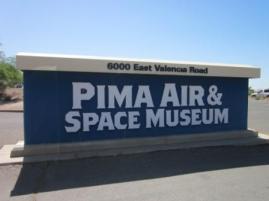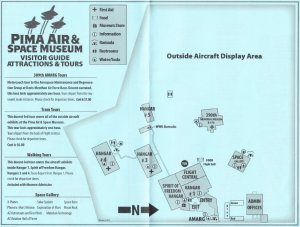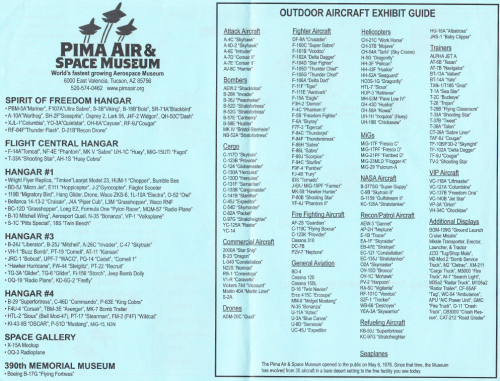Pima is a county in the South of Arizona, where the city of Tucson is located. Tucson is home of the Davis-Monthan Air Force Base, where the US Air Force’s 309th Aerospace Maintenance and Regeneration Group (AMARG), known as “The Boneyard”, is located. I wrote about the Boneyard in a previous post. In order to visit the Boneyard, you need to visit the Pima Air & Space Museum and that is how I got to know about the museum.
The description of the museum from their website states (the emphasis is mine):
“The Pima Air & Space Museum is one of the largest aviation Museums in the world, and the largest non-government funded aviation Museum in the United States. You’ll see more than 300 aircraft and spacecraft including many of the most historically significant and technically advanced craft ever produced, both from the United States and throughout the world.”

Pima Air & Space Museum (Tucson, AZ).
The museum has 6 hangars and one space gallery, plus an impressive exhibit outdoors, which can be visited with a tram or on foot (or both). You can see in the map below the arrangement of the museum:

Pima Air and Space Museum map.
Together with the plan the visitor is handed an inventory of the aircraft on exhibit and where are they located (in which hangars):

Pima Air and Space Museum inventory.
As you can see from the inventory above, the list of aircraft exhibited at the museum is simply impressive, overwhelming. Add to that, that in this museum you can get as close to the aircraft as you wish.
In the website of the museum you can find brief explanations of each of the aircraft on exhibit (here). This aircraft index can be surfed very handily ordering the aircraft by different criteria. The information about them includes some technical specifications, a brief historical explanation and a picture of the aircraft (I would almost say that it makes up for a visit of the museum). A very good job on the part of the museum curators.
Some of the highlights (in my opinion) of the museum:
Find some pictures I took of some of these aircraft and others in the slide show below:
This slideshow requires JavaScript.
The Pima Air & Space Museum has also facilities to restore the aircraft they get and bring them to a decent status to be put on exhibition. Some of the aircraft are on loan from the US Air Force Museum.
Within the museum there are plenty of US armed forces veterans willing to share with you detailed explanations or anecdotes from any of the aircraft. The tram visit of the outdoor exhibit is guided by one of these veterans… no need to say that the experience is fantastic.
It goes without saying it, that I strongly recommend to visit this museum as it is one of the best aerospace museums that I have ever visited. Couple that with the visit to the Boneyard and it is definitely a must for aerospace aficionados.
Finally, some tips to visit the museum:
- plan your visit as early as possible (doors open at 9am),
- allow yourself no less than 5 hours to comfortably visit the museum,
- if the visit is in summertime, bring a bottle of water with you (which can be refilled in any of the many sources inside the museum),
- plan to have lunch in the museum,
- book yourself a place both in the tram to visit the outdoor exhibit and in the bus to visit the Boneyard (for this a photo ID will be necessary), as tickets sell out, be there at 9am.






